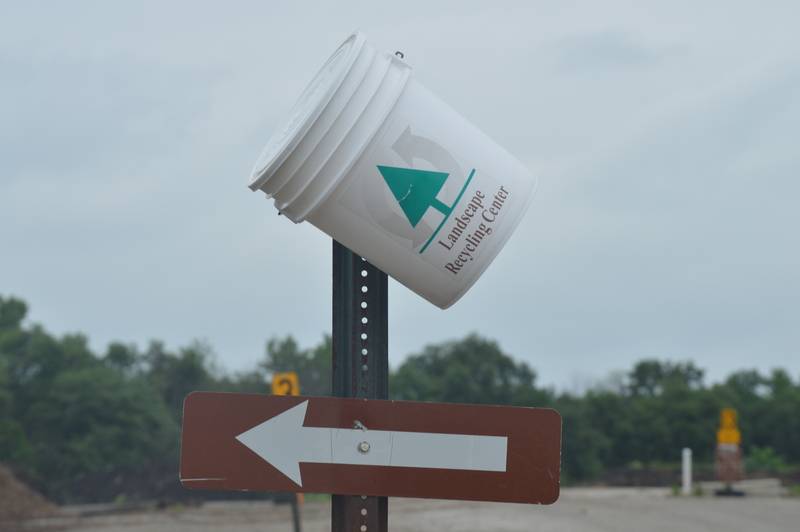It’s yard work season, and though it is really one of my least favorite things to do in life, it’s one of those tasks that I am bound to as an adult and as a homeowner. Weeds are my nemesis, and I’m often filling up those lawn bags with all of that stuff that I’ve pulled out of my lawn and landscaping to make them look more beautiful. Maybe not beautiful, but at least presentable. Others across C-U are filling those bags as well, adding up to a lot of yard waste.
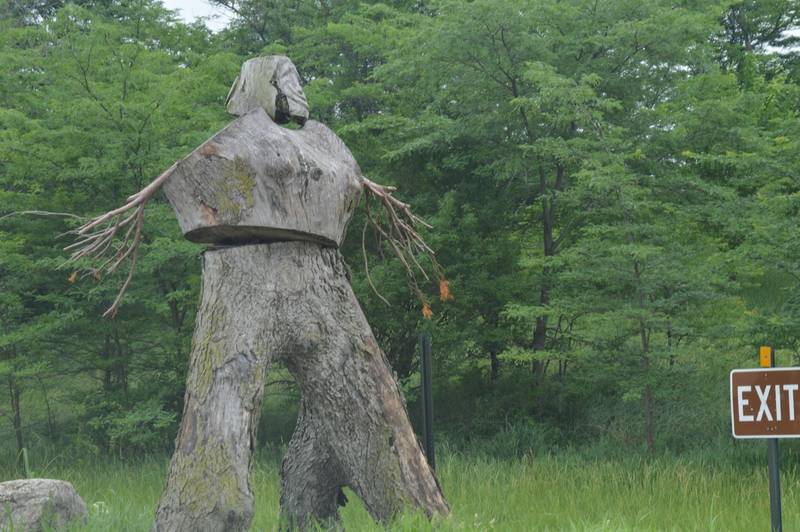
At first glance, Landscape Recycling Center would not strike you as a place that is doing anything life changing. Tucked away off University Avenue on the outskirts of Urbana, it looks like a bunch of piles of dirt and mulch. But those piles are evidence of the important work this organization is doing in our community by reducing the amount of waste in our landfill, encouraging community members and businesses to participate in that reuse and recycle process, and educating the public on how best to use their products. The facility is operated by the City of Urbana Public Works Department, but with a cooperative agreement with the City of Champaign, and it serves all of Champaign County. Mike Brunk, City Arborist for the City of Urbana and manager of the Landscape Recycling Center, spent some time with me last week relaying the history and processes of the organization.
In 1985, the site where Landscape Recycling now sits was a landfill. It had been that way for 40 years, and it was quickly running out of space. They discovered that every fall, over 60% of the landfill was comprised of leaves and brush. According to their website, around 25% of all Illinois landfills are filled with yard debris. I’d always assumed items “of nature” such as those would just break down and return to the earth. Not so much. Once leaves, brush, and other yard waste was piled in with other forms of waste, it didn’t have anywhere to go.
City leaders at the time decided to come up with a way to recycle those types of materials and stretch the life of the landfill. Brunk says, “We made it economically feasible to segregate your material. There wasn’t a law at that time. People could just throw their trash and their brush in the same pile.” The center opened to the public in 1987.
It was important for the site to be self-sufficient — that they would have enough volume going in and out that would eliminate the need for support from tax dollars. And so far, they’ve been successful. According to Brunk, they are the only government-operated, self-sufficient operation such as this in the Midwest that doesn’t use tax dollars. The site is completely funded by the fees that folks pay to bring their materials, and the products that they sell from the recycling of those materials. The site didn’t take off right away, however. They were getting plenty of material, but it wasn’t going back out. Part of the problem was the name. They first opened as the Yard Waste Reclamation Site. Doesn’t exactly roll off the tongue. With a grant, they were able to hire a professional marketer. The name was changed, they put out publications, they partnered with what’s now the Mid-American Gardener show on WILL, and they did the work to make themselves the local authority on how to use the materials at the site.
Last summer, the organization hit a milestone. They passed the one million mark; that is, they’ve recycled more than one million cubic yards of community yard waste, and they’ve turned it into 600,000 cubic yards of product that’s been returned to the community.
 Where your lawn bags go before heading to the tub grinder
Where your lawn bags go before heading to the tub grinder
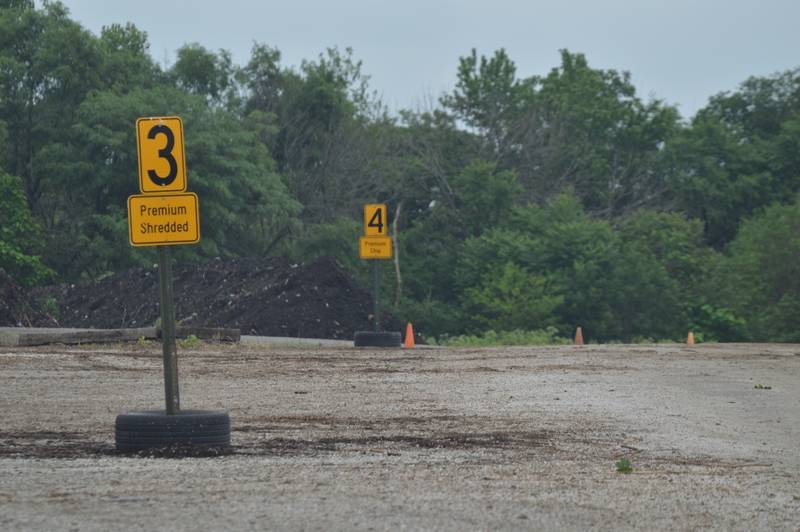
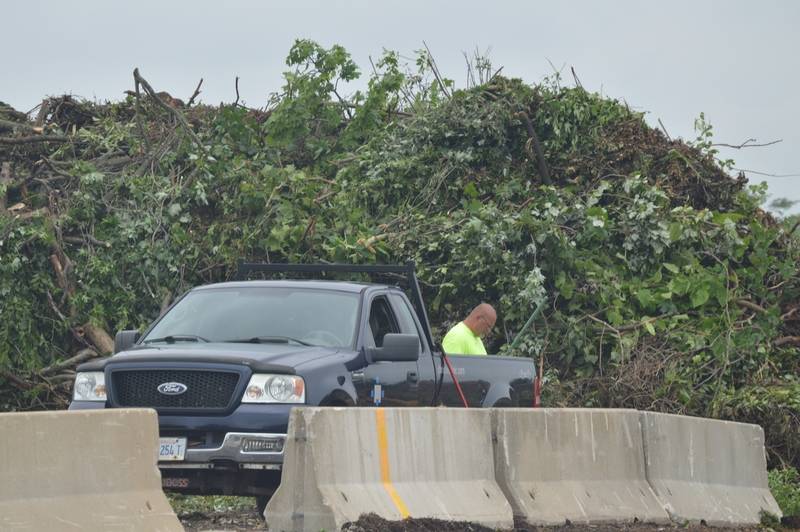
Brunk took me on a walking tour of the site, and I learned about the various products that they work with, as well as the processes that are used to take the raw materials they receive and turn them into usable product for community use. The site is meant to be very user-friendly. Brunk calls it a “one-stop shop” where folks can easily drive in and drop off their waste, as well as load up what they are purchasing. Public access is a unique feature here. Whether you are there on commercial business or individual use, after a check in at the entrance you are free to access the grounds for dropping or loading.
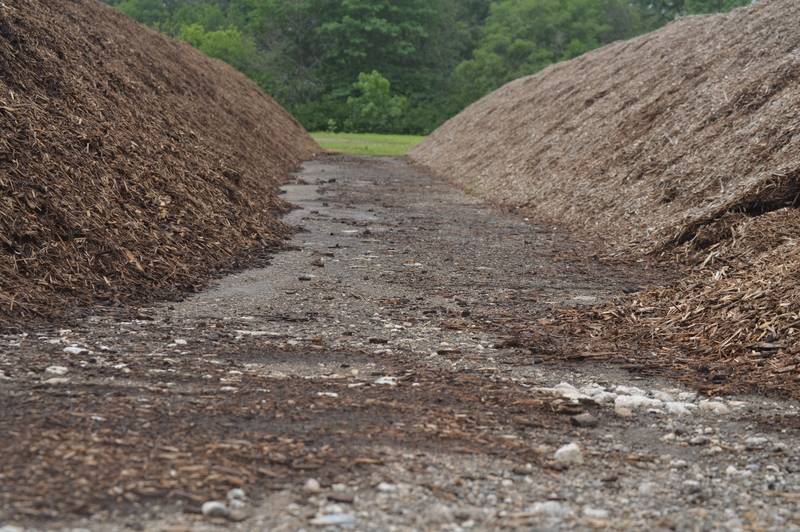
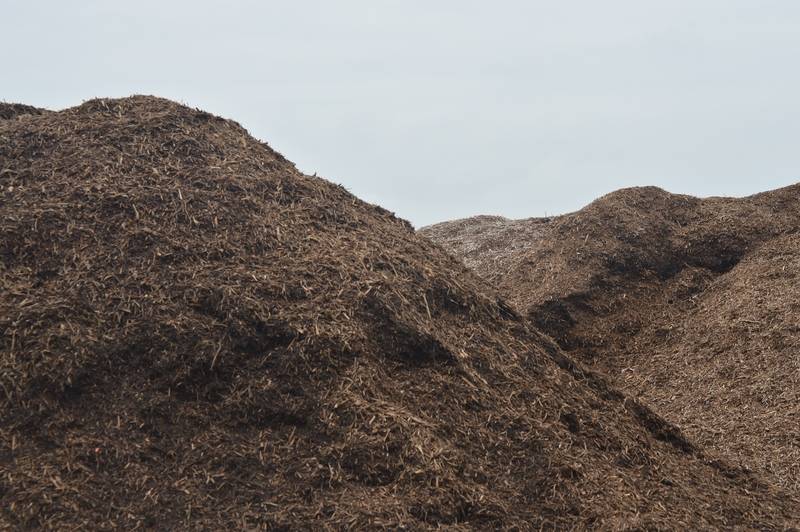
They take in two basic types of material: Herbaceous and woody. They keep those types separate, but both are processed through the tub grinder, which shreds it. The woody material becomes wood mulch. The raw shredded material is composted for about 3 to 4 months, then some is left as is, while some is run through the shredder a second time for a finer, more premium mulch. They will also receive wood from local tree trimming, that comes already chipped, then it will be composted as well. People select the mulch based on decorative qualities, how it ages, and how well it stays in place.
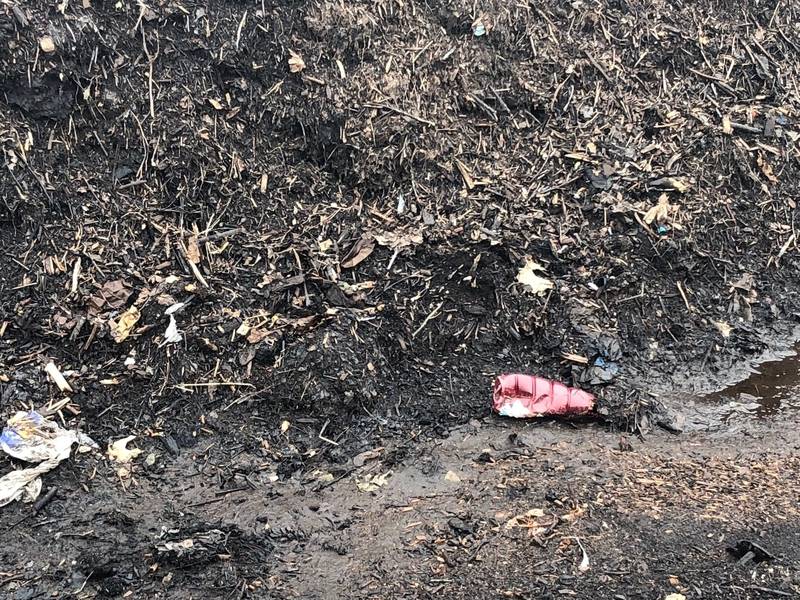 Compost from community waste, before filtering
Compost from community waste, before filtering
Landscape Recycling will take in what Brunk calls “street leaves” as well as other community waste materials from stump removals, hole diggings, etc. They take that material, filter out any random waste or debris, then combine it with their compost to make a topsoil.
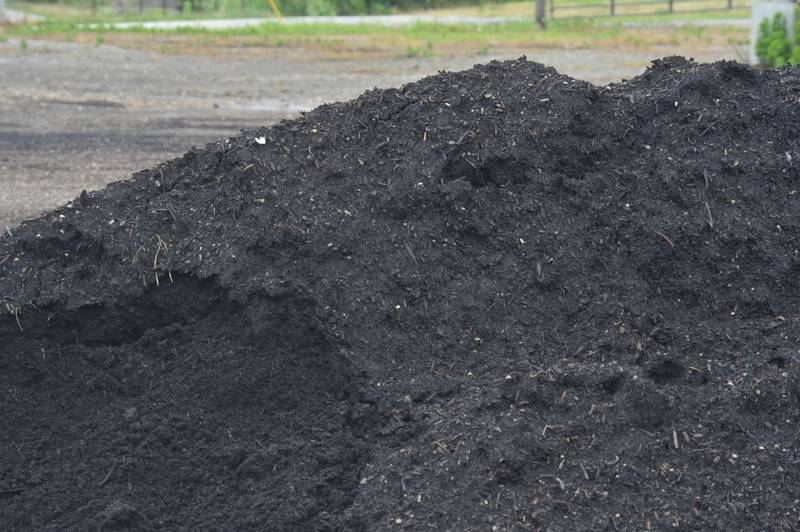 Mushroom compost
Mushroom compost
We then came to the part of the tour where the aroma gave away the composition of the material. They bring in what’s called “mushroom compost,” which is horse manure. The name comes from the usage of it, which is to grow mushrooms. Once the mushrooms are grown, it’s disposed of. Landscape Recycling turns it into a garden product. They made it available as a result of several inquiries from gardeners who knew it to be an effective additive to their gardens, which highlights their relationship with the community, and willingness to adapt as needs arise.
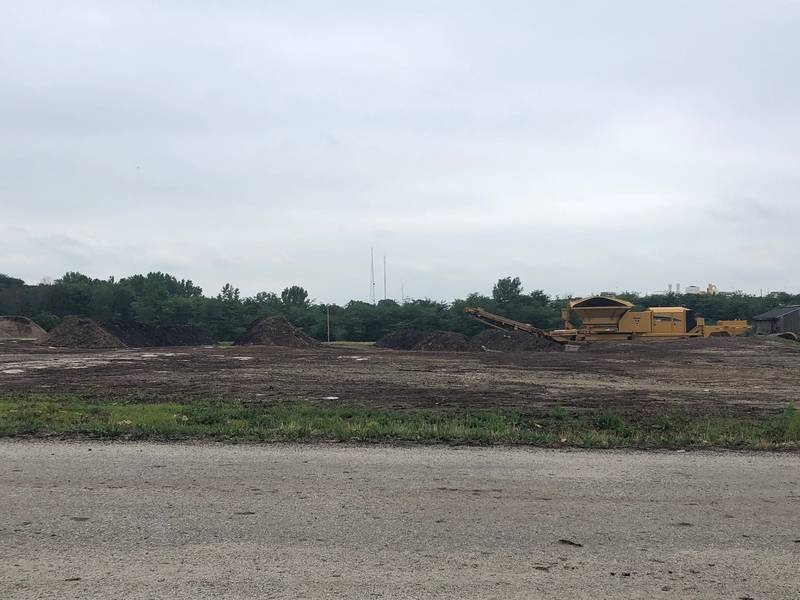 Wind rows of compost
Wind rows of compost
The herbaceous material, what’s usually coming out of the lawn bags that you drop off, will eventually become compost for your garden as well. After its trip through the tub grinder, it’s deposited into “wind rows.” As a row is left to compost, and is turned over regularly, it reduces in size. Then they use an inloader to combine the rows, until they end up with fewer and fewer rows. The entire process takes about four years, so leaves and such that were brought here in 2015 will be sold as compost in 2019. They test the compost regularly to meet EPA requirements.
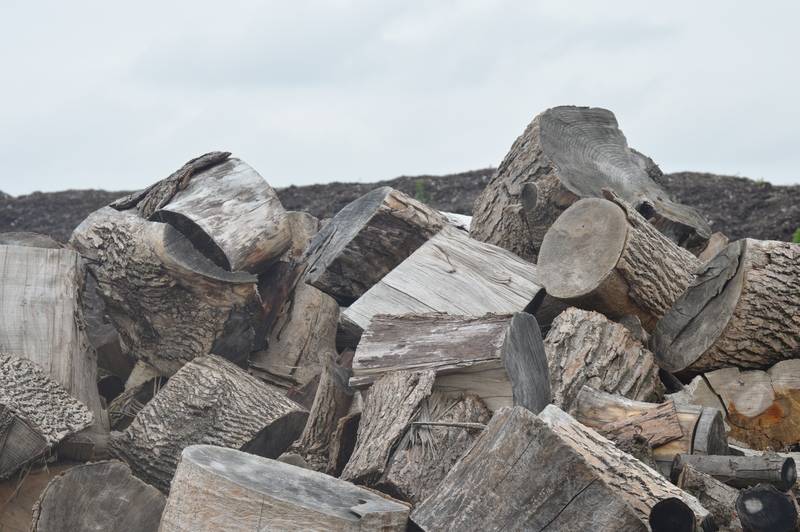 Wood from tree removals
Wood from tree removals
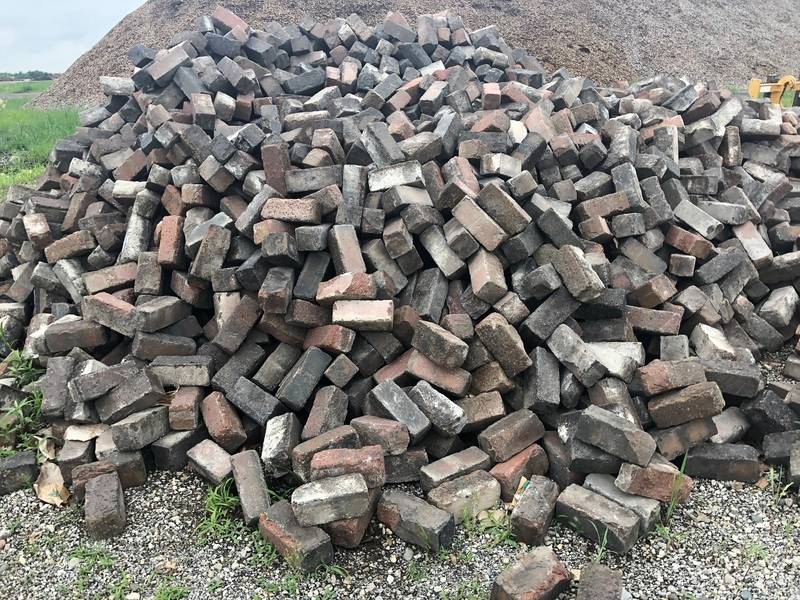 Bricks from North Broadway Avenue
Bricks from North Broadway Avenue
While compost and mulch comprise the bulk of their available products, you can also purchase firewood, either bulk — which is free — or split, recycled granite fines, or asphalt millings. You can even purchase bricks that were removed from North Broadway when it was repaved, and have a little bit of Urbana history in your yard.
Here at Smile Politely we seek to cover the “hyper-local,” and Landscape Recycling Center surely embodies that. From the beginning, they set out to serve our local communities, and they continue do to so today.
Landscape Recycling Center is located at 1210 E. University in Urbana. You can find out more about products and pricing, drop off policies, and more by visiting their website.
Photos by Addison McClure








